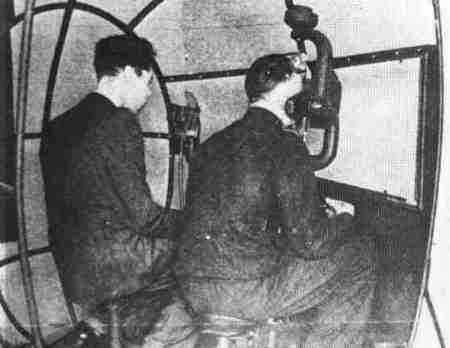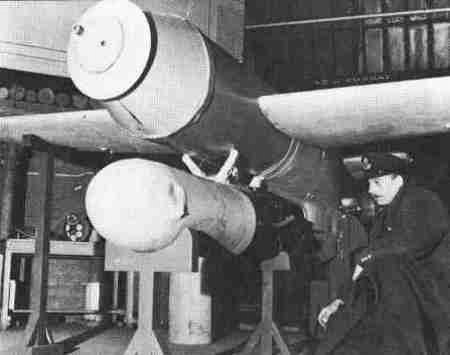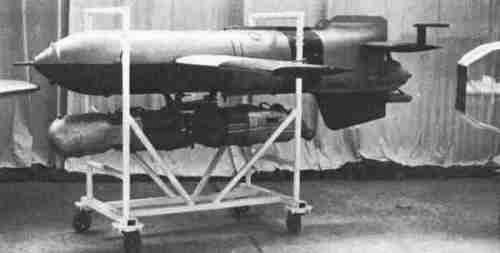Henschel Hs 293

|
The beginning ideas that were to evolve into the Henschel Hs 293
appeared as early as 1939. In 1940 an experimental model having the
shape of a glider was built. The goal was to develope a
remote-controlled air-to-surface missile against shipping. Development proceeded even though no suitable rocket motors were available. The experimental model used a standard SC 500 bomb with extra wings and tail unit but no rudder. A propulsion system was finally developed and the liquid-fueled rocket was fitted under the main missile body. An 18-channel radio system was used for control. The missile was designed to be carried under a parent bomber. Warm exhaust air from the aircraft engines was channeled to the missile to prevent it from freezing at high altitudes. Once dropped the Hs 293 would fall for some 90m before the rocket achieved maximum thrust. The parent bomber would continue to fly a predesignated course parallel with the target. The bombardier could visually track the missile with the aid of red guidance flare in the tail and control the projectile using a small control box with a joystick. The actual flight path resembled a series of arcs as correction signals were received and followed. The main weakness of the Hs 293A was that the parent bomber had to fly a steady, level path. Evasive moves to avoid anti-aircraft fire was impossible, even though the Hs 293 outranged most ship-borne anti-aircraft guns. An improved H2 293D with a television camera installed in the head of the missile as aiming system was planned but the war concluded before it could be realized. Also, the problem of icing was never resolved and thus further propulsion units were designed. The war ended before these plans could leave the experimental stage. |




